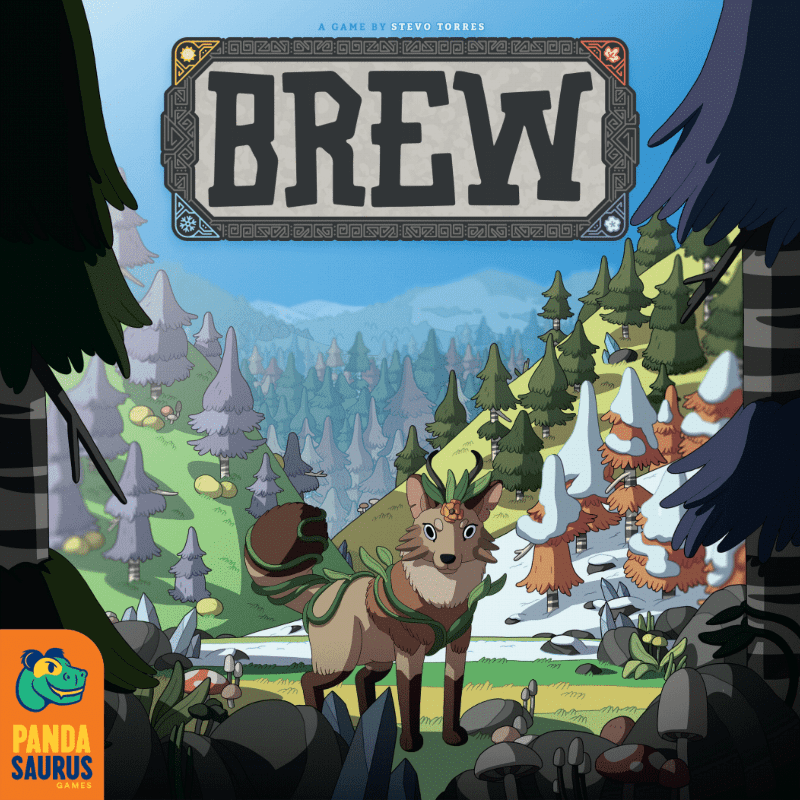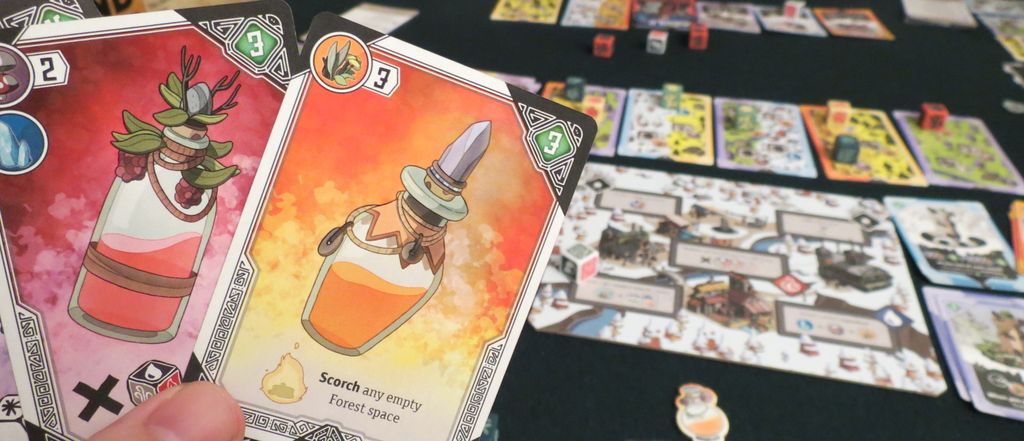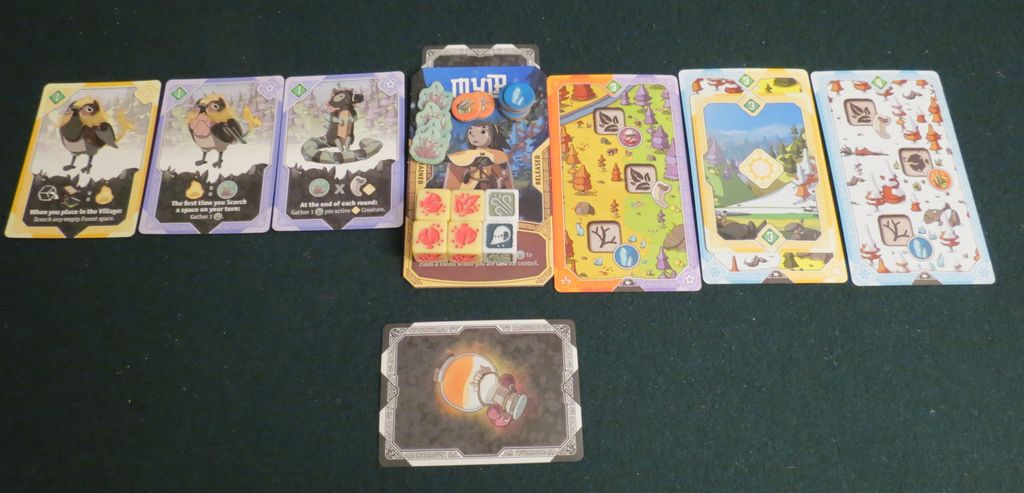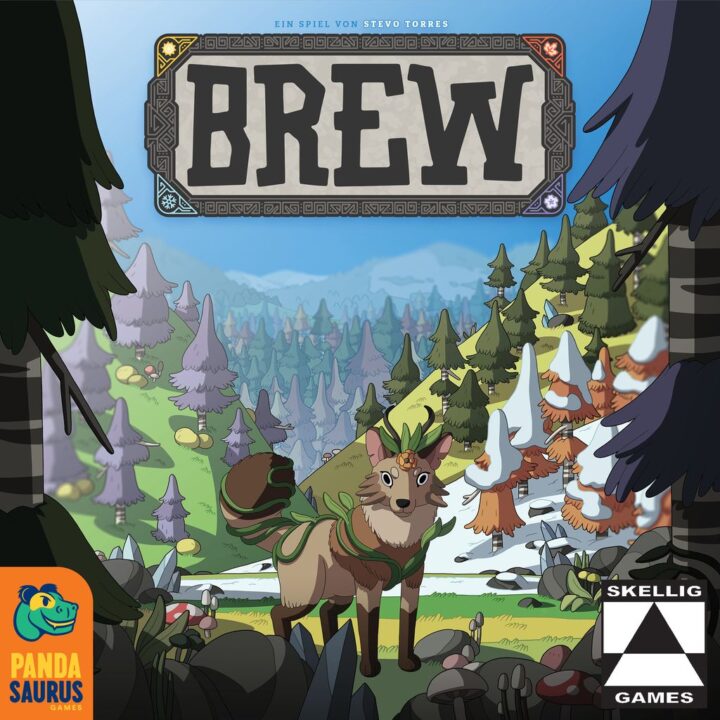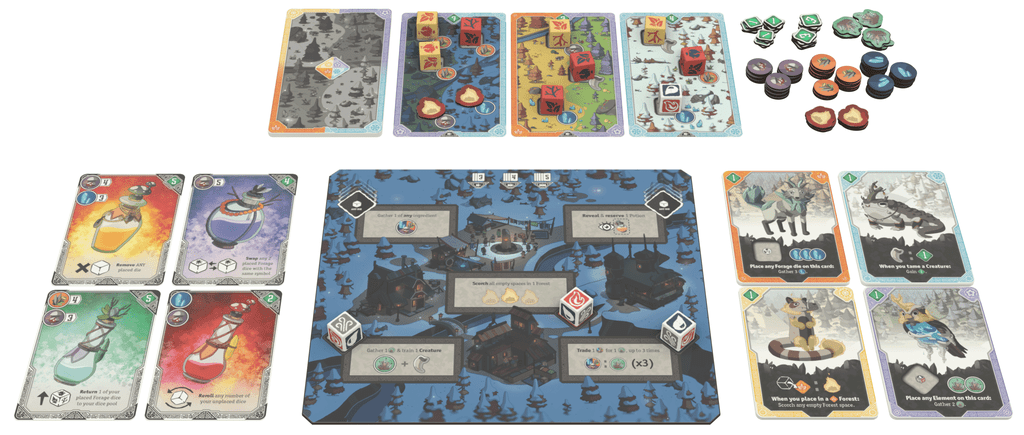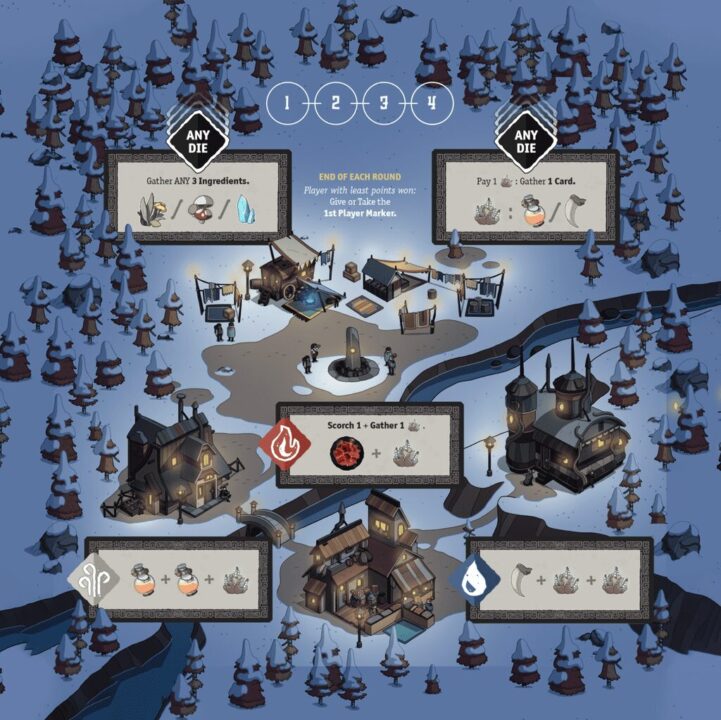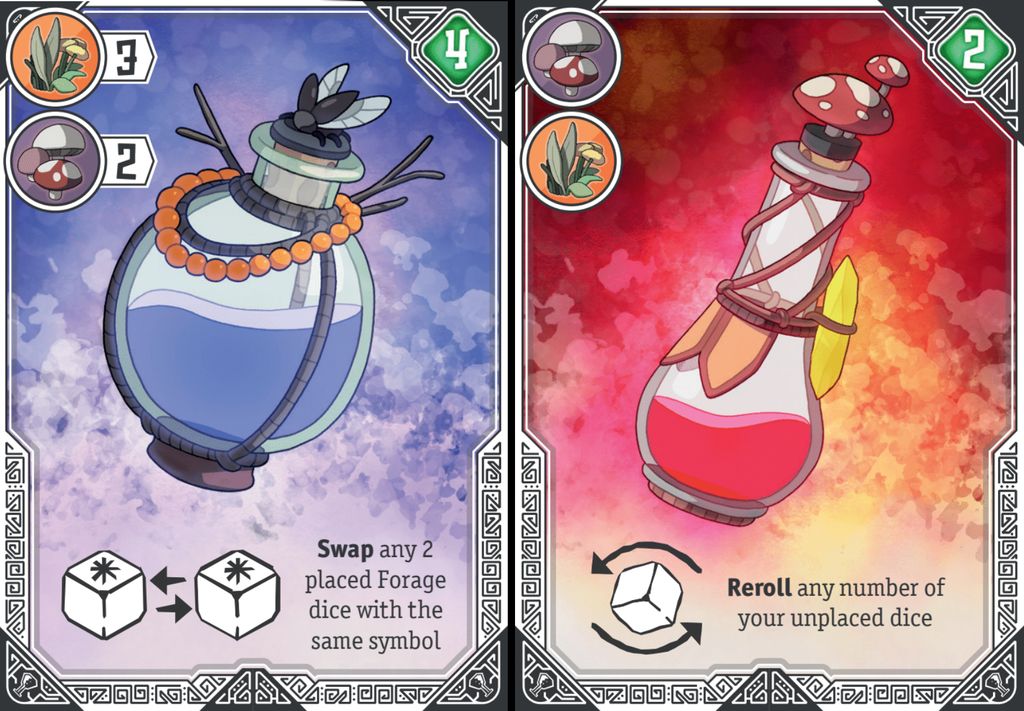I’ve spent the past few weeks wrangling wild creatures, mixing potions, and shaking my fist at cosmic dice rolls with my friends. Welcome to my honest review of Brew! If you’re wondering whether this strange little game is worth squeezing onto your shelf, I’ve got you covered. Pour yourself a pretend potion—let’s see if Brew casts a spell, or just leaves us with a hangover.
How It Plays
Setting up
Lay out the forest tiles, mix the potion cards, and give everyone a character board. Hand out the chunky dice and some energy berries. Make sure there’s enough room for all the critters you’ll be rescuing, and clear space for the market.
Gameplay
On your turn, roll your dice. Place them on the forest tiles or the village, trying to gather resources, claim forests, and brew potions. You’re fighting—sometimes literally, with my friend Pete—over control of the forests. Potions add fun chaos, letting you mess with other players or boost your moves. Every round, refill the forests and keep snatching those critters and ingredients.
Winning the game
After the last round, count up your points from claimed forests, saved critters, leftover berries, and potions brewed. Whoever has the most points wins. If you don’t win, you can always blame the dice, like I do!
Want to know more? Read our extensive strategy guide for Brew.
Artwork and Visual Appeal: Brew’s Whimsical Woods
If you have ever wanted to fall into the wild daydreams of a woodland druid after three cups of herbal tea, Brew’s artwork will get you there. Seriously, the art in Brew is so gorgeous that I spent way too long just setting up the cards to make a pretty tableau. My friends were like, “Can we play now?” and I was busy admiring the little forest creatures. Each player board looks like something that would fit right into a storybook.
I think artists Maggie Ivy and Andrew Thompson really brought their A-game here. The colors pop but don’t punch you in the face, which is nice when you’re trying to focus on what potion to brew next. Every creature card looks huggable or like it’s about to swipe your snacks. The forest tiles and dice all fit the mystical, cozy vibe. Even my cat stared at the components for a good three minutes, which is the highest compliment I can give.
The tokens are chunky and super tactile. I’m not sure if they make me hungry or if I’m just always thinking about snacks while playing games. The graphic design is clear, which is a relief since I’m not so good at remembering what things do. It’s also fun that the art style makes even fierce game moments feel a bit less cutthroat—like being challenged to a duel by a hedgehog wearing a tiny leaf hat.
I do wish the insert inside the box kept things more organized. Sleeve your cards or face the shuffle goblin every game setup.
Now, let’s grab our dice and hop into the real magic: Brew’s game mechanics and its crunchy little strategy bits.
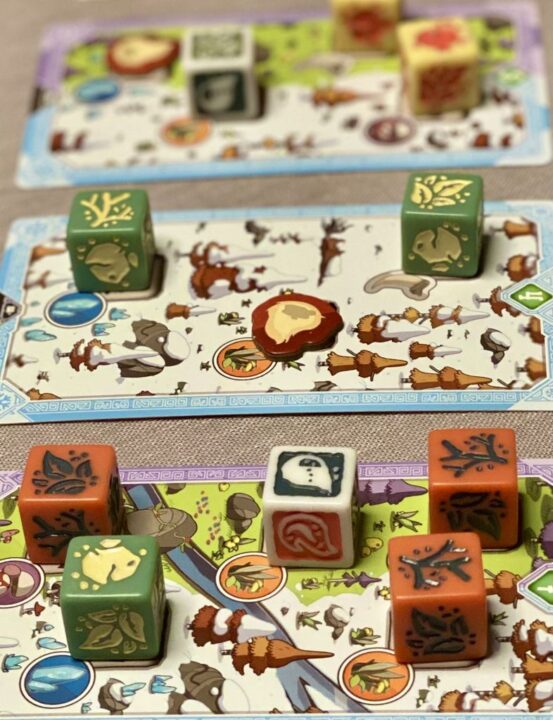
Game Mechanics & Strategy Depth in Brew: Where Luck Meets Planning
I’ve played Brew with several groups now, and I can tell you this game brings a weird mix of chaos and clever decisions. The basics seem simple enough: you’re rolling dice, gathering resources, and competing to control magical forests. But once you get past the cute animal art, Brew has a sharp bite hiding in those decisions. Rolling dice each round decides which actions you’ll have available, and trust me, the dice gods sometimes love to watch you cry! For a game that looks this peaceful, Brew can get surprisingly cutthroat.
The strategy is all about managing the dice you roll and the potions you brew (get it?). You’ll fight for forage, take over forests, and hopefully earn enough points to win. There’s some crunchy choices here. Do you spend a potion now to ruin your friend’s perfect turn, or save it for when things get worse? Should you focus on controlling forests, or snagging the most magical creatures? I’ve seen strategies work in one game and flop hard in another, usually thanks to a dash of bad luck or a big play from someone else.
I appreciate that Brew tries to balance planning with unpredictability, but sometimes, luck swings things just a bit too much. If you’re allergic to randomness, you’ll probably grumble as much as I did when my dice betrayed me three turns in a row. Still, there’s enough room for smart moves to keep most players thinking and cackling. If you want a deep, brain-burning game, Brew isn’t your best bet, but for a fast, feisty contest, it delivers.
And now, sharpen your elbows and brace yourself: next up we’ll see just how nasty Brew can get when friends turn into foes—let’s talk player interaction and competition!
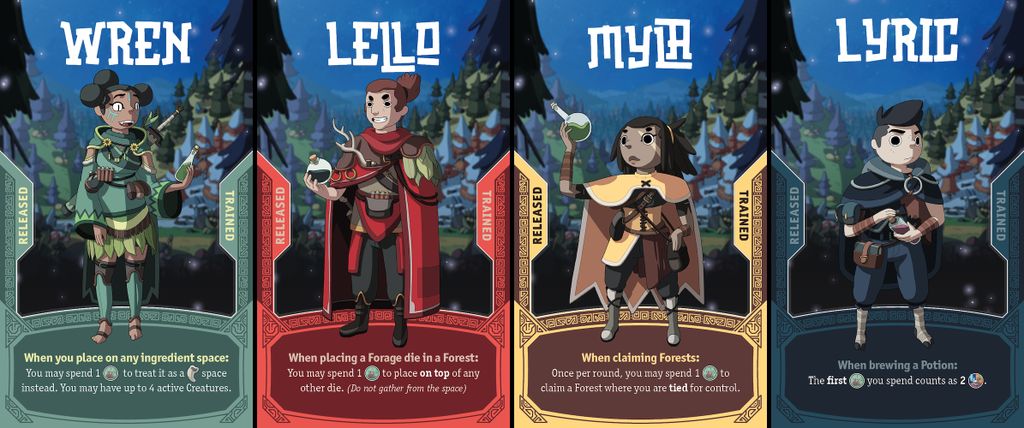
Player Interaction and Competition in Brew: Brewing Up Rivalries
So, let me set the scene for you—a cozy game night, chips in hand, and everyone ready to become the reigning forest guardian in Brew. That peaceful atmosphere did not last. From the get-go, Brew turns every player into a competitive potion-mixing, woodland critter-hoarding fiend. And honestly, I loved it.
The player interaction in Brew is not just a polite handshake; it’s a full-on tug-of-war! You see, every forest card on the table is up for grabs, and you have to place your dice to control them. But here’s the catch: Those dice placements are rarely safe. Overnight, a friend becomes your nemesis when they swap out your die with theirs, thanks to special powers or sneaky cards. My friend Jeff almost threw his meeple in protest more than once (sorry, Jeff—but I’ve got a squirrel to protect!).
Brew’s competition gets extra spicy with the foraging and potion brewing. You’ll constantly block, sabotage, and sometimes outright mess with each other’s plans—no sugar-coating here. The ability to reroll dice, drink unique potions, or recruit forest creatures means you can launch surprise moves at almost any time. There’s no hiding in the woods! If you’re looking for a game where everyone minds their own business, Brew is not it. Everyone is in everyone’s grill, which makes every turn tense, hilarious, and slightly personal (no, I’m not salty, you are!).
But is all this chaos down to player skill, or does luck have a say? Grab your lucky underwear and join me for a no-punches-pulled look at Brew’s luck versus skill balance—next up!
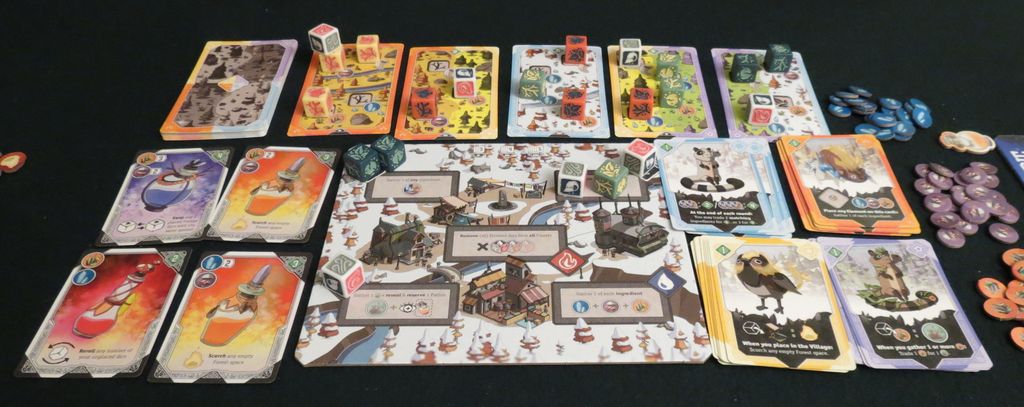
Luck vs Skill: The Brewing Storm
Let’s get real: luck and skill always cause drama in board games. You know, like when you sit down to play Brew with that one friend who claims to be a strategy master—then blames every loss on the dice. (Yes Mike, I’m talking about you.)
Here’s the deal: Brew mixes both luck and skill, but sometimes the scales tip a little too much towards luck. Every round you roll dice to gather ingredients and control forests. Sounds neat, right? Except, sometimes those dice will betray you like a soggy tea bag. You can plan, plot, and try to outthink your table nemesis, but if your dice don’t cooperate, you might just find your grand plan ruined faster than you can say “foraging squirrel.”
Don’t get me wrong, there are ways to mitigate luck. Brew gives you potion cards to bend the rules and creatures to help twist fate your way. Smart players can use these to squeeze a little more predictability out of those wily dice. But you can’t escape the chaos entirely. If you like pure strategy with little randomness—Brew might drive you madder than your uncle at a magic show.
Is Brew still fun? Oh, absolutely. We laughed, we argued, we blamed the dice. If you want a game where every move is a clever calculation, Brew’s not it. If you’re OK with a fair bit of chaos and a sprinkle of luck, pull up a seat! Final word: I recommend Brew for folks who don’t mind things getting a little wild, but not for those who crave total control.

Conclusion
Brew looks like a dream and has moments of magic, but it’s not for folks who hate chaos. My friends and I loved the tight competition and gorgeous art. Still, dice can roll you right off the path! If you want fun and a bit of wild luck, Brew cooks up a good time. If you need pure strategy with no surprises, maybe try a different potion. That’s it for my Brew review. Now go forth and conquer your kitchen table!

